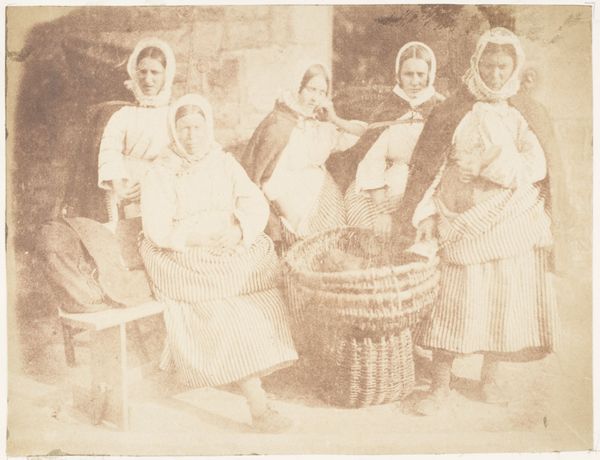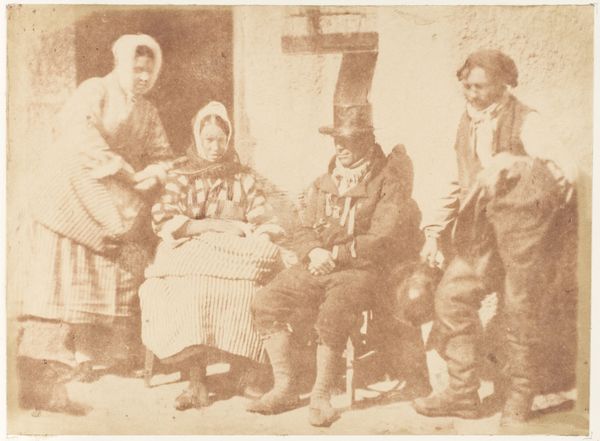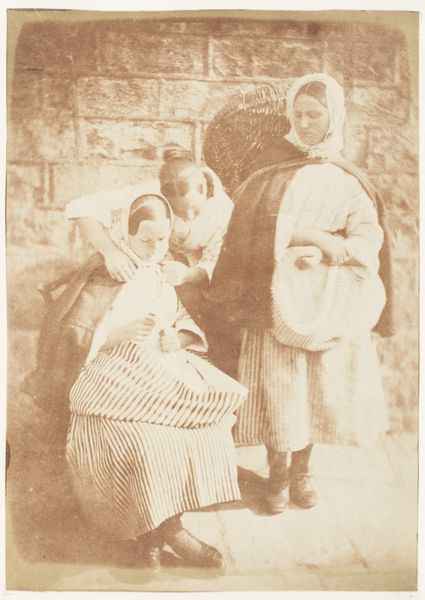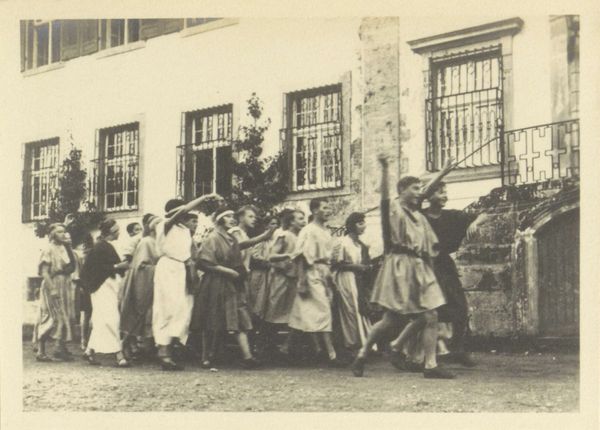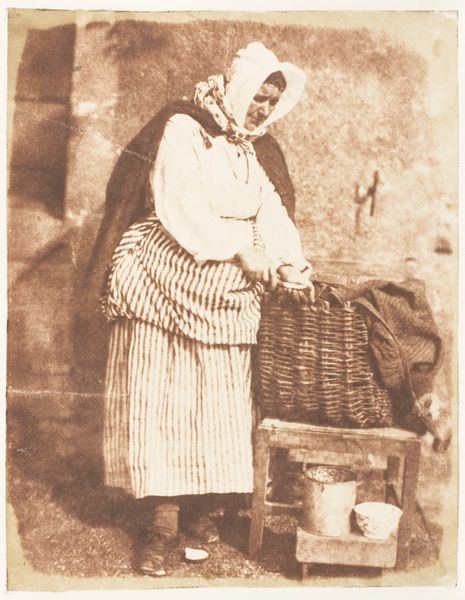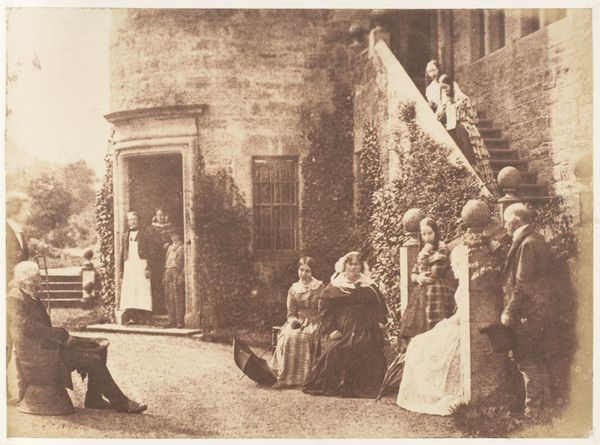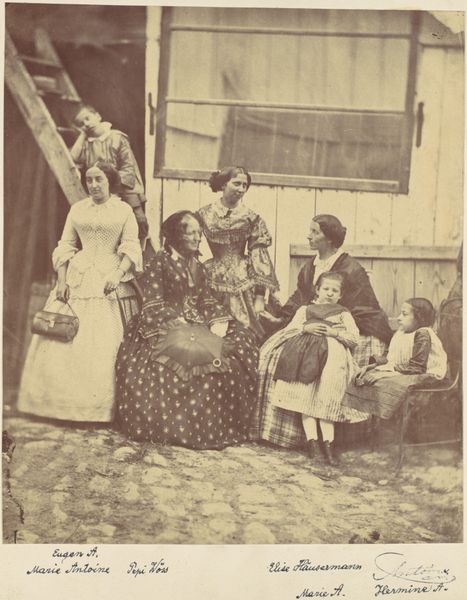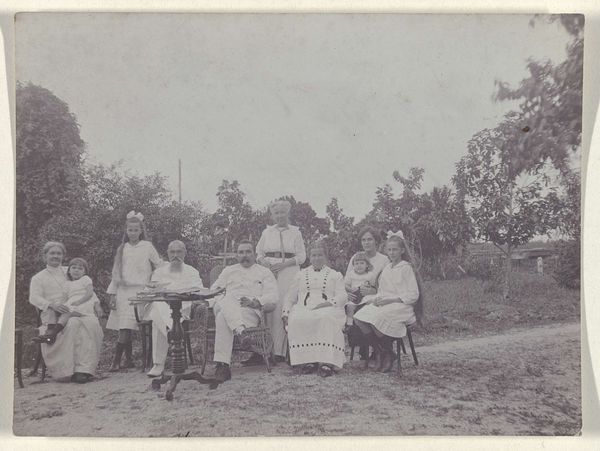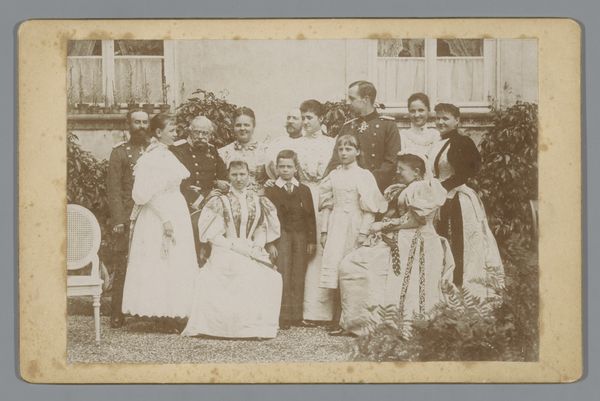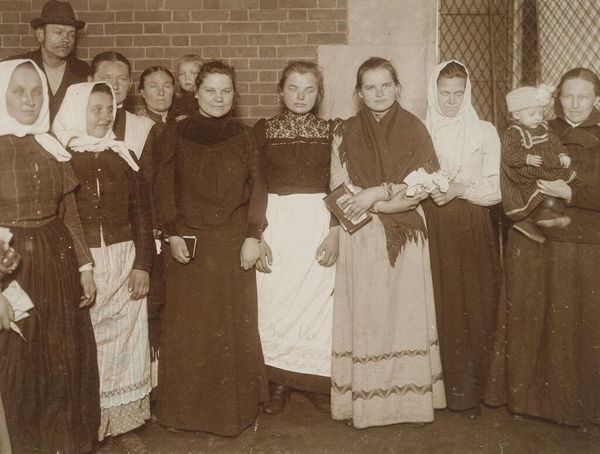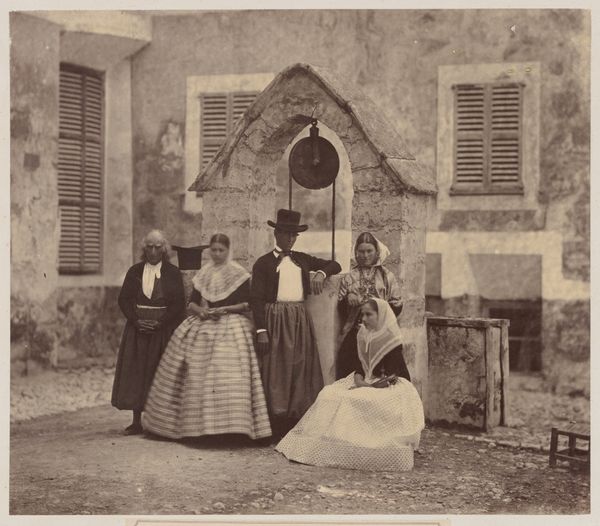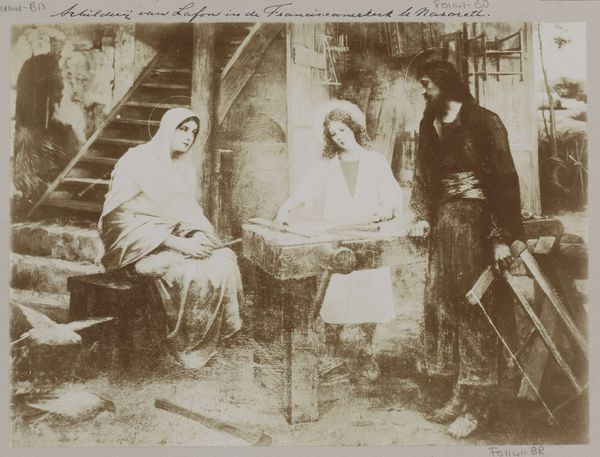
photography, gelatin-silver-print
#
portrait
#
photography
#
historical photography
#
group-portraits
#
romanticism
#
gelatin-silver-print
#
scottish-colorists
#
19th century
#
ashcan-school
#
genre-painting
#
realism
Copyright: Public Domain
Curator: This is "Newhaven Fishwives," a photograph made between 1843 and 1847 by David Octavius Hill and Robert Adamson. It’s currently housed at the Metropolitan Museum of Art. Editor: There’s a subdued stillness here. The sepia tone imbues it with such warmth, while the almost geometrical composition with the lines of the women's skirts gives me the feeling of something both human and staged at the same time. Curator: The image showcases women of Newhaven, a fishing village near Edinburgh. Hill and Adamson captured everyday people, elevating their status within the public’s perception of art. The work speaks volumes about 19th-century Scottish society and the representation of laboring classes. Editor: That’s interesting given their choice of the calotype process, known for its softer focus, right? It romanticizes even this quite realistic depiction. It's not just documenting life but shaping its aesthetic interpretation for their audiences. Curator: Absolutely. Think about how photography was still so young then! By choosing certain subjects, especially working-class women, and portraying them with dignity, Hill and Adamson are contributing to a broader social discourse about class and representation within the arts and culture of their period. They were actively creating a public image that promoted certain values. Editor: I keep coming back to the strong diagonal created by the composition. It’s subtle, but the arrangement guides the eye from left to right, engaging with the individual expressions of each subject. These lines seem to counterpoint a central basket, that then functions like a focalizing dark mass. Curator: That detail illustrates perfectly how photographs from that time, through exhibitions and dissemination as prints, played a vital role in constructing a shared national and cultural identity in Scotland. They presented Scottish life as they saw it. Editor: Considering how we’ve analyzed the aesthetics, the formal choices made by the artists, the tonal qualities and visual geometry, against its historic social context, it enriches how we experience it here today in the museum. Curator: Precisely, bringing that socio-historical framework offers crucial layers of understanding as we engage with "Newhaven Fishwives."
Comments
No comments
Be the first to comment and join the conversation on the ultimate creative platform.

